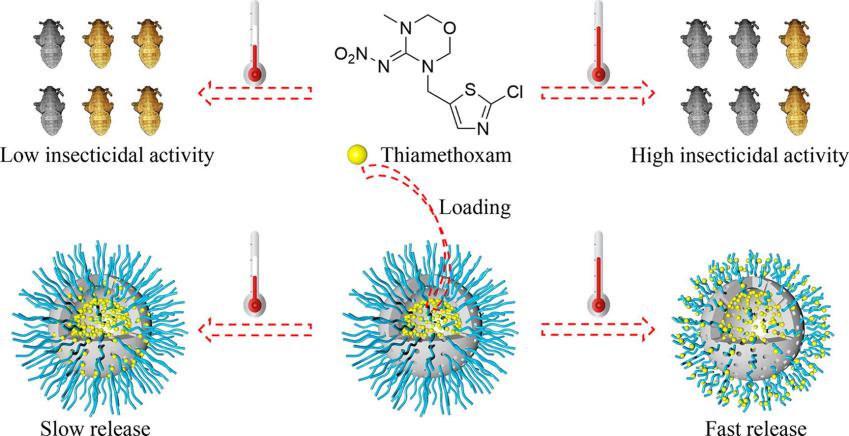Recently, a research paper entitled Thermoresponsivepolymer-encapsulated hollow mesoporous silica nanoparticles and theirapplication in insecticide delivery has been published on Chemical Engineering Journal by Professor Li Jianhong and his team from the College of Plant Science & Technology of HZAU.
In the preliminary study of Prof. Li's team, they found the mortality of THI@HMS@P(NIPAM-MAA) against Nilaparvata lugens(Stål)(Hemiptera: Delphacidae) was positively correlated with temperature. Based on this feature, Prof. Li and his team designed a temperature-responsive nano drug-loading system by selecting a type of positive temperature coefficient insecticide, thiamethoxam (THI), as the model pesticide and a temperature-responsive polymer-modified hollow mesoporous silica nanocomposite as a carrier material. This system showed significant temperature-controlled release properties and excellent light stability. The bioactivity results showed that the mortality ofTHI@HMS@P(NIPAM-MAA) against Nilaparvata lugens (Stål) (Hemiptera: Delphacidae) was positively correlated with temperature, and the THI@HMS@P(NIPAM-MAA) possessed longer-term bioactivity than traditional types, which could significantly improve pesticide utilization. Furthermore, nanocarrier materials had good biocompatibility and showed negligible effects on rice seedling growth. The research results could provide data support for the scientific use of pesticides against the backdrop of global warming, and an important reference for the research of smart pesticide formulations and the efficient use of pesticides.

Gao Yunhao and Xiao Yanan, graduate students of the College of Plant Science& Technology of HZAU, are the first authors of the paper and Associate Professors Wan Hu and He Shun are the corresponding authors. This research was sponsored by the National Key R&D Program of China (2017YFD020030803), the National Natural Science Foundation of China (31601654), and the Fundamental Research Funds for the Central Universities (2662019PY052 and 2662019PY077).
Source: http://news.hzau.edu.cn/2019/1017/55367.shtml
Translated by: Chen Xiuqiong
Supervised by: Jin Bei
